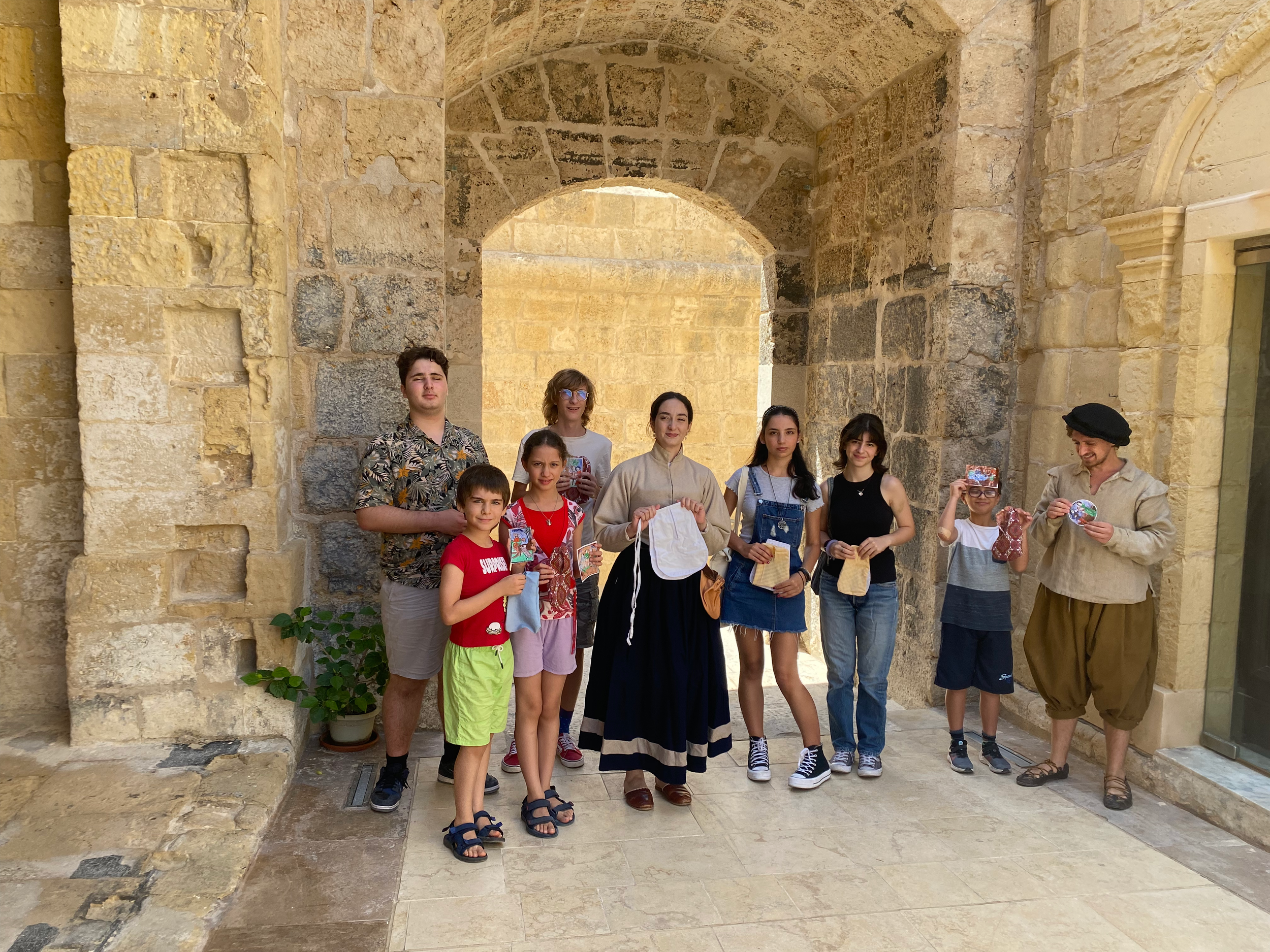This workshop was organized and delivered by Compagnia San Michele and hosted by Fort St Angelo, Heritage Malta. For this activity, we planned a two-part session around painting and sewing. The session lasted 3 hours, with each workshop taking 1.30hrs.
The Painting Workshop
During the session participants were given a short explanation of how an artist bottega would have functioned, describing the different tasks apprentices would have been given. This included the daily task of preparing paint for the master painter and his assistant painters in the workshop. Here we discussed the natural sources of paint and how they would have been extracted.
The workshop proceeded with a hands-on demonstration where attendants made their own paint and painted a small replica print of original woodblock prints of the period.








The Sewing Session
The session started with a general explanation of historical textiles within the period we cover. Explaining past attitudes towards conserving and utilising as much of the fabric as possible while constructing garments that last. During this session, participants were given a short demonstration of how to draft, pin, and cut fabric after they prepared their own Saccoccia, a historical fabric pocket that would have been tied at the waist between the outer skirt and the petticoat of a woman’s dress. It was occasionally worn on the outer skirt in later periods too.
Women with a saccoccia worn above her outerskirt







What we observed
This workshop was aimed towards children 13 and over, although we had some participants who were slightly younger. Participants were accompanied by a parent or guardian as part of Heritage Malta’s workshop policy. Our main concern for this workshop was that it was a full three hours were we would risk losing the interest and attention of participants. It was surprising that this was not an issue in this case as they were well engaged in both activities, asking questions and contributing to the discussion. What we also observed was that the adult acomopanying the children were all extremely engaged all throughout the workshop, helping the participants and asking questions themselves. This contibutes to the scope of our project as we aim to improve agency for both our members and our users within the realm of culture, heritage and the arts. This session is an example of family learning as parents engaged themselves through their children. Such activities could also be great promoters of life long learning as both child and parent contributed to and took away from the activity.









